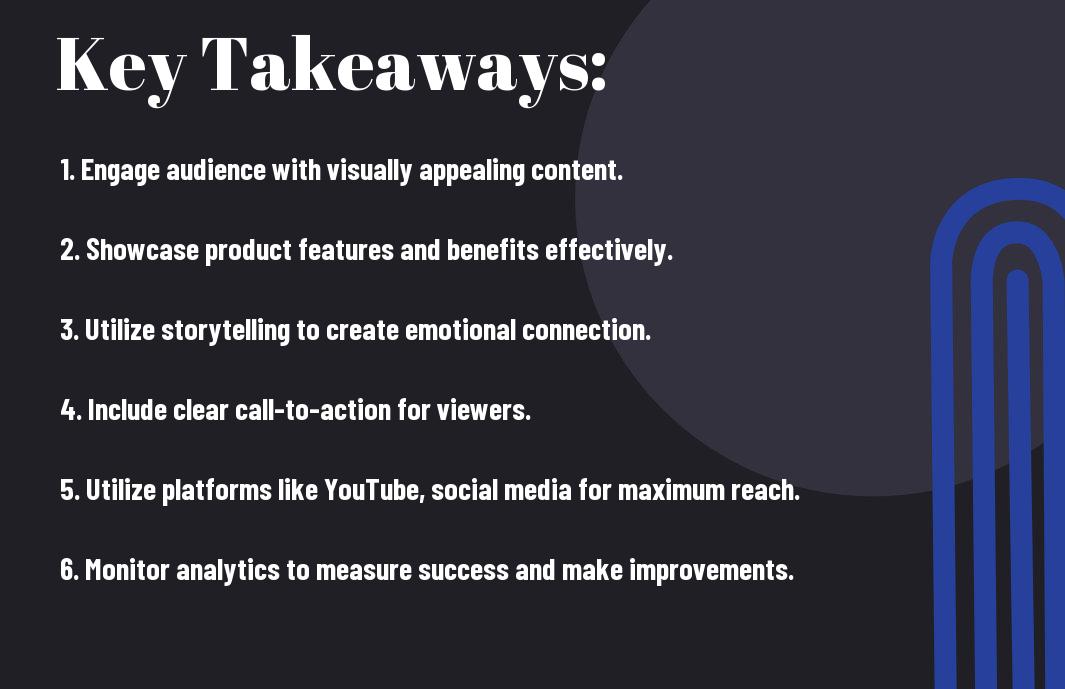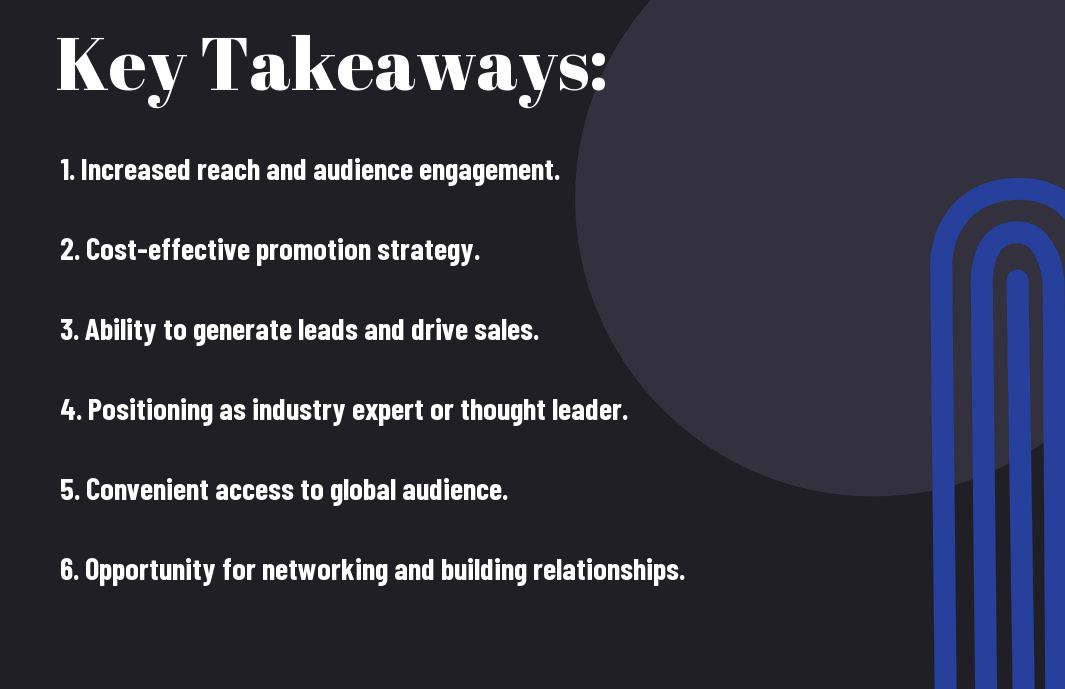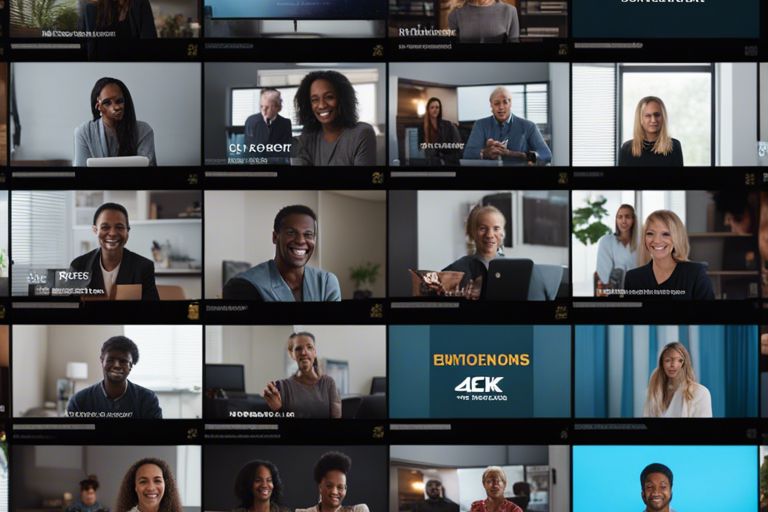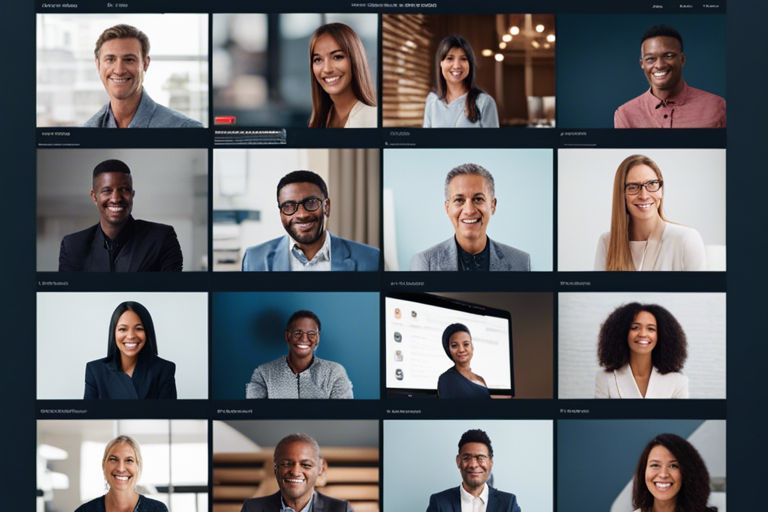Many small business owners like yourself often wonder how to effectively promote their businesses online to reach a wider audience and drive more sales. If you’re seeking valuable insights on this topic, you’ll find helpful tips and strategies in this blog post. By implementing the right internet promotion techniques, you can boost your online presence and attract potential customers. To dive deeper into digital marketing for small businesses, check out How do you start digital marketing for a small business with ….
Key Takeaways:
- SEO is crucial: Implementing search engine optimization strategies can help small businesses improve their online visibility and attract more organic traffic.
- Social media marketing: Engaging with customers on popular social media platforms can help businesses build brand awareness, drive traffic to their websites, and boost sales.
- Email marketing: Sending personalized and targeted emails to customers can help small businesses nurture relationships, promote products or services, and drive conversions.

Identifying Your Target Audience
Defining Your Niche
Audience identification is crucial for the success of your small business internet promotions. Start by defining your niche – this means identifying a specific segment of the market that you want to target. Think about what makes your product or service unique and who would benefit the most from it.
Understanding your niche allows you to tailor your marketing efforts to reach the right audience. By focusing on a specific target market, you can create more personalized and effective promotional strategies.
Creating Buyer Personas
Buyer personas are fictional representations of your ideal customers based on market research and real data about your existing customers. By creating detailed buyer personas, you can better understand the needs, behaviors, and concerns of your target audience.
With buyer personas, you can tailor your marketing messages and campaigns to resonate with different segments of your target audience. This personalized approach can lead to higher engagement and conversion rates, ultimately helping you achieve your business goals more effectively.


Building a Strong Online Presence
Website Optimization for Small Businesses
The key to building a strong online presence starts with optimizing your website. The design and layout of your website should be clean, professional, and easy to navigate. Make sure your website is mobile-friendly, as more and more users are accessing the internet from their smartphones and tablets. Additionally, optimize your website for search engines by including relevant keywords, meta descriptions, and alt tags for images. This will help improve your site’s visibility and ranking on search engine results pages.
Leveraging Social Media Platforms
One of the most effective ways to build your online presence is by leveraging social media platforms. Social media allows you to connect with your target audience, engage with them in real time, and promote your products or services. By creating a strong presence on platforms like Facebook, Instagram, and Twitter, you can increase brand awareness and drive traffic to your website. You can also use social media to share valuable content, such as blog posts, videos, and infographics, that showcases your expertise and builds credibility with your audience.
Social media is not only a powerful tool for building your online presence, but it also allows you to interact with your customers on a more personal level. By responding to comments, messages, and reviews, you can show your audience that you value their feedback and are committed to providing excellent customer service. This engagement can go a long way in building a loyal customer base and differentiating your small business from competitors.
Content Marketing Strategies
Crafting Compelling Blog Posts
Strategies for crafting compelling blog posts involve understanding your target audience and addressing their needs and interests in a way that is engaging and informative. By focusing on topics that resonate with your audience and providing valuable insights or solutions, you can establish credibility and build a loyal following. Make sure to use a mix of informative content, storytelling, and visuals to keep your readers engaged and coming back for more.
Utilizing Email Newsletters
Posts
This direct form of communication allows you to stay connected with your audience and provide exclusive content, promotions, and updates. By personalizing your newsletters and segmenting your audience based on their interests, you can increase engagement and drive conversions. Remember to include compelling subject lines and a clear call to action to encourage readers to take the next step.
Creating Engaging Video Content
Blog
With the rise of video consumption online, creating engaging video content can significantly boost your small business’s online presence. Whether it’s product demonstrations, behind-the-scenes looks, or how-to guides, video content is a powerful way to connect with your audience on a personal level. Be sure to optimize your videos for search engines and share them across your website and social media platforms to maximize their reach.
Search Engine Optimization (SEO) Techniques
Keyword Research and Analysis
All successful SEO strategies start with keyword research and analysis. By identifying the right keywords for your business, you can attract more qualified traffic to your website. You should focus on relevant keywords that have high search volume and low competition. This will help you rank higher in search engine results and increase your visibility online.
On-Page Optimization Strategies
On-page optimization is crucial for improving your website’s visibility in search engine results. This includes optimizing your titles, meta descriptions, headings, and content with relevant keywords. By creating high-quality, engaging content that is optimized for search engines, you can increase your chances of ranking higher.
Analysis of your on-page optimization efforts is vital to see what’s working and what needs improvement. Monitor your website’s performance regularly, track your keyword rankings, and analyze your traffic sources. By constantly refining your on-page optimization strategies, you can stay ahead of the competition and drive more organic traffic to your site.
Building High-Quality Backlinks
Building high-quality backlinks is another vital SEO technique for small businesses. Backlinks from reputable websites can significantly improve your website’s authority and credibility in the eyes of search engines. You can acquire backlinks through guest posting, partnerships, and creating valuable content that others want to link to.
Building a strong backlink profile takes time and effort, but the payoff is well worth it. Focus on getting backlinks from websites that are relevant to your industry and have a good reputation. By building high-quality backlinks, you can improve your search engine rankings and drive more traffic to your website.
Optimization
Optimizing your website for search engines is a continuous process that requires dedication and effort. By implementing the right SEO techniques, such as keyword research, on-page optimization, and building high-quality backlinks, you can improve your website’s visibility and attract more potential customers. Stay informed about the latest trends in SEO and be willing to adapt your strategies to stay ahead of the competition.
Pay-Per-Click (PPC) Advertising
Unlike organic search strategies, Pay-Per-Click (PPC) advertising allows you to place your small business at the top of search engine results instantly. It is a cost-effective way to drive traffic to your website and increase conversions. To get the most out of your PPC campaigns, you need to set them up effectively.
Setting Up Effective PPC Campaigns
Advertising on platforms like Google Ads requires strategic planning. You need to choose the right keywords, write compelling ad copy, and set a budget that aligns with your business goals. By conducting thorough keyword research and crafting relevant ads, you can increase your chances of reaching your target audience and driving qualified traffic to your site.
Targeting Specific Audiences with AdWords
Effective PPC campaigns utilize tools like Google AdWords to target specific audiences based on factors like location, interests, and online behavior. By tailoring your ads to specific demographics, you can improve the relevance of your campaigns and increase your chances of attracting potential customers. AdWords offers detailed targeting options that allow you to hone in on your ideal audience and maximize the impact of your advertising efforts.
AdWords’ targeting capabilities enable you to refine your audience based on parameters such as age, gender, device, and more. By leveraging these features, you can ensure that your ads are being shown to the right people at the right time, ultimately boosting your chances of converting clicks into sales.
Measuring and Optimizing PPC Performance
For Pay-Per-Click advertising to be truly effective, you must continuously monitor and optimize your campaigns. By analyzing metrics like click-through rate, conversion rate, and cost per acquisition, you can identify opportunities for improvement and make data-driven decisions to enhance your results. Regularly A/B testing different ad variations and landing pages can help you refine your campaigns and increase their overall effectiveness.
PayPerClick platforms provide robust analytics tools that allow you to track the performance of your campaigns in real-time. By leveraging these insights, you can make informed adjustments to your PPC strategies and ensure that you are maximizing your return on investment. Recall, the key to successful PPC advertising lies in continuous optimization and a willingness to adapt to the ever-changing digital landscape.
Influencer Marketing and Partnerships
Despite the rise of social media and digital marketing, traditional forms of advertising such as influencer marketing and partnerships still hold a significant place in promoting small businesses. By collaborating with influencers in your niche or industry, you can leverage their audience and credibility to expand your reach and attract potential customers.
Finding the Right Influencers for Your Business
Influencers play a crucial role in shaping consumer perceptions and driving purchasing decisions. When looking for influencers to partner with, consider factors such as their relevance to your industry, engagement with their audience, and authenticity in promoting products or services. It’s important to choose influencers whose values align with your brand to ensure a genuine connection with their followers.
Building Relationships with Influencers
Right from the start, focus on building authentic and long-lasting relationships with influencers. Engage with their content, offer value, and show genuine interest in their work. By nurturing these relationships, you not only create a strong foundation for collaboration but also cultivate trust and loyalty, leading to more effective partnerships in the long run.
Another important aspect of building relationships with influencers is to respect their creative freedom. Allow influencers to put their unique spin on the content they create for your brand, as their authenticity and voice are what resonate with their audience. By giving them creative control, you empower them to produce content that feels genuine and relatable, resulting in a more impactful marketing campaign.
Measuring the Success of Influencer Partnerships
To gauge the effectiveness of your influencer partnerships, you can track various metrics such as engagement rates, click-through rates, conversion rates, and overall brand visibility. Set clear goals and key performance indicators (KPIs) before collaborating with influencers, and use analytics tools to monitor and evaluate the outcomes of your campaigns. By analyzing these metrics, you can determine the ROI of your influencer partnerships and make informed decisions for future collaborations.
Influencer marketing can be a powerful tool for small businesses to increase brand awareness, drive traffic, and boost sales. By strategically partnering with the right influencers, nurturing strong relationships, and measuring the impact of your collaborations, you can effectively harness the influence of online personalities to elevate your business’s online presence and achieve your marketing goals.
Final Words
Presently, you have learned about various effective internet promotion techniques that can benefit your small business. By implementing a combination of strategies such as search engine optimization, social media marketing, email campaigns, and content marketing, you can increase your online presence and attract more customers to your business. Remember to regularly analyze your results and adjust your tactics to stay ahead of the competition in the ever-evolving digital landscape.
Ultimately, the key to successful internet promotion for small businesses is to be consistent and persistent in your efforts. By dedicating time and resources to your online marketing strategies, you can effectively reach your target audience and drive growth for your business. Stay informed about the latest trends and tools in digital marketing to continually improve your online visibility and increase your brand recognition. With determination and creativity, you can harness the power of the internet to achieve your business goals.
FAQ
Q: What are the most effective internet promotion techniques for small businesses?
A: The most effective internet promotion techniques for small businesses include search engine optimization (SEO), social media marketing, pay-per-click advertising (PPC), email marketing, and content marketing.
Q: How can search engine optimization (SEO) help small businesses with internet promotion?
A: SEO can help small businesses improve their online visibility by optimizing their website to rank higher in search engine results. By targeting relevant keywords and creating high-quality content, small businesses can attract more organic traffic to their website.
Q: What role does social media marketing play in promoting small businesses on the internet?
A: Social media marketing allows small businesses to connect with their target audience, build brand awareness, and drive traffic to their website. By engaging with followers, sharing valuable content, and running targeted ad campaigns, small businesses can effectively promote their products or services on social media platforms.












